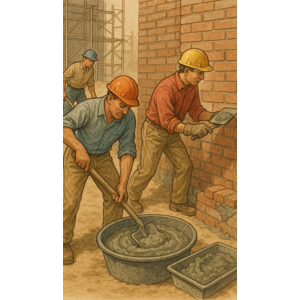MORTAR / STUCCO
 |
|||

Mortar is used to bond building materials like Bricks, Blocks and Stones.
Stucco is a plaster-like material applied as a finish coat on walls, especially exteriors. Applied in layers, Stucco hardens into a strong, weather-resistant surface.
Similarities to Cementitious Products: They are based on Portland Cement.
Differences from Concrete - Mortar and Stucco use Fine Aggregates like Sand, while Concrete uses both Fine and Coarse Aggregates.
Stucco is used for Coating, while Concrete is used for Structural applications.
Shining a light on over 80 Construction Categories, with unlimited potential for Sub Categories - Watch our Community grow!

